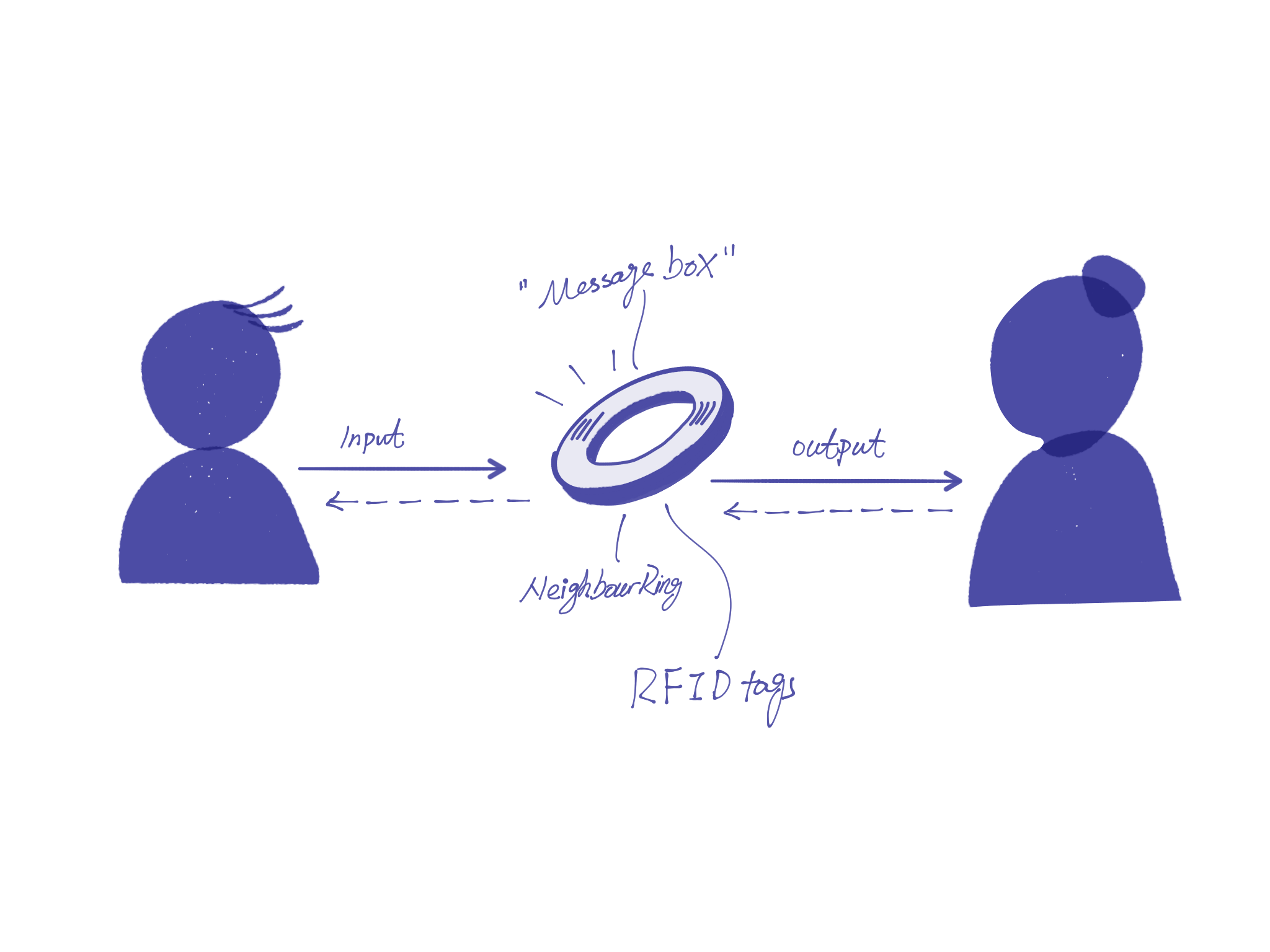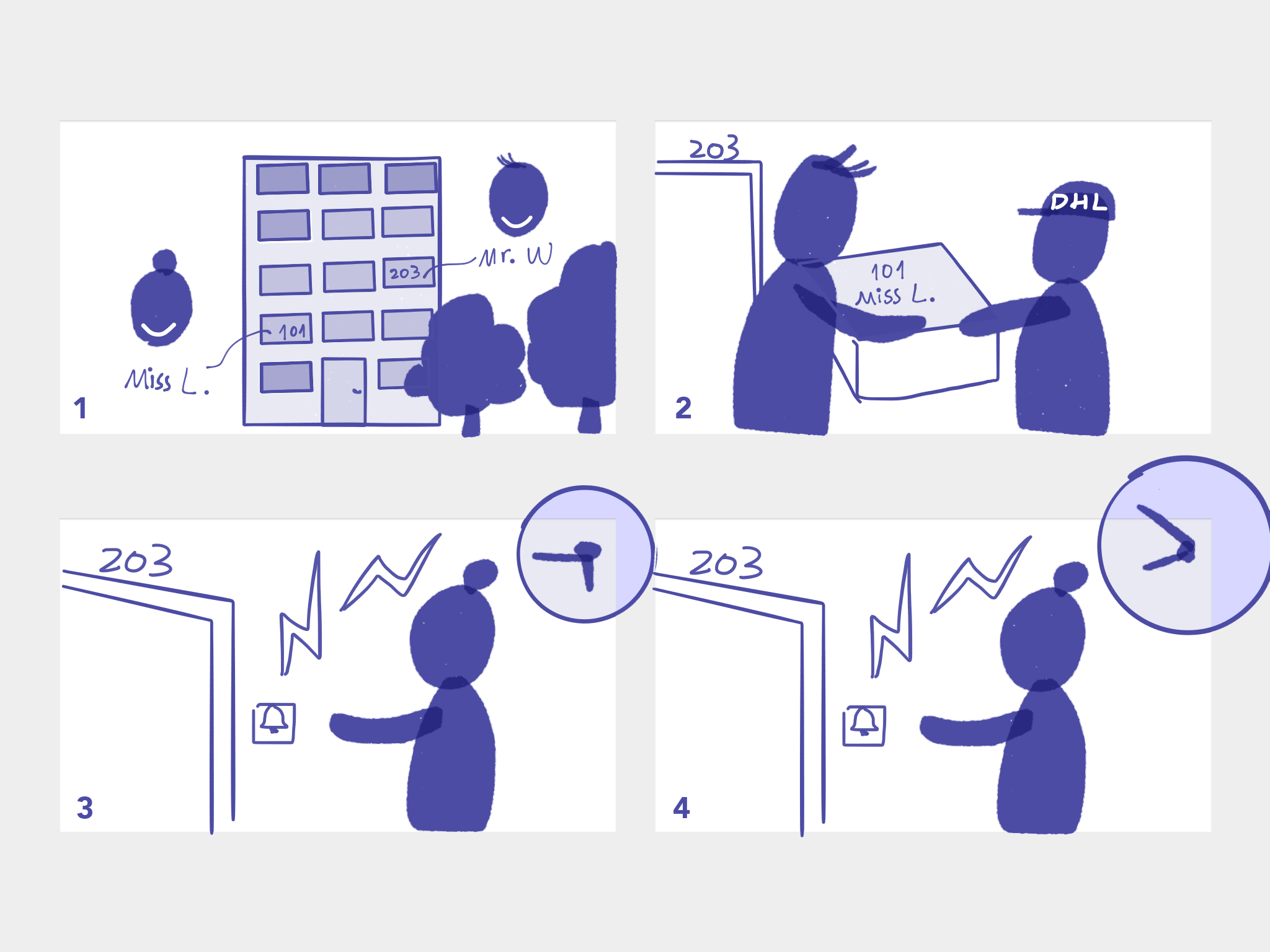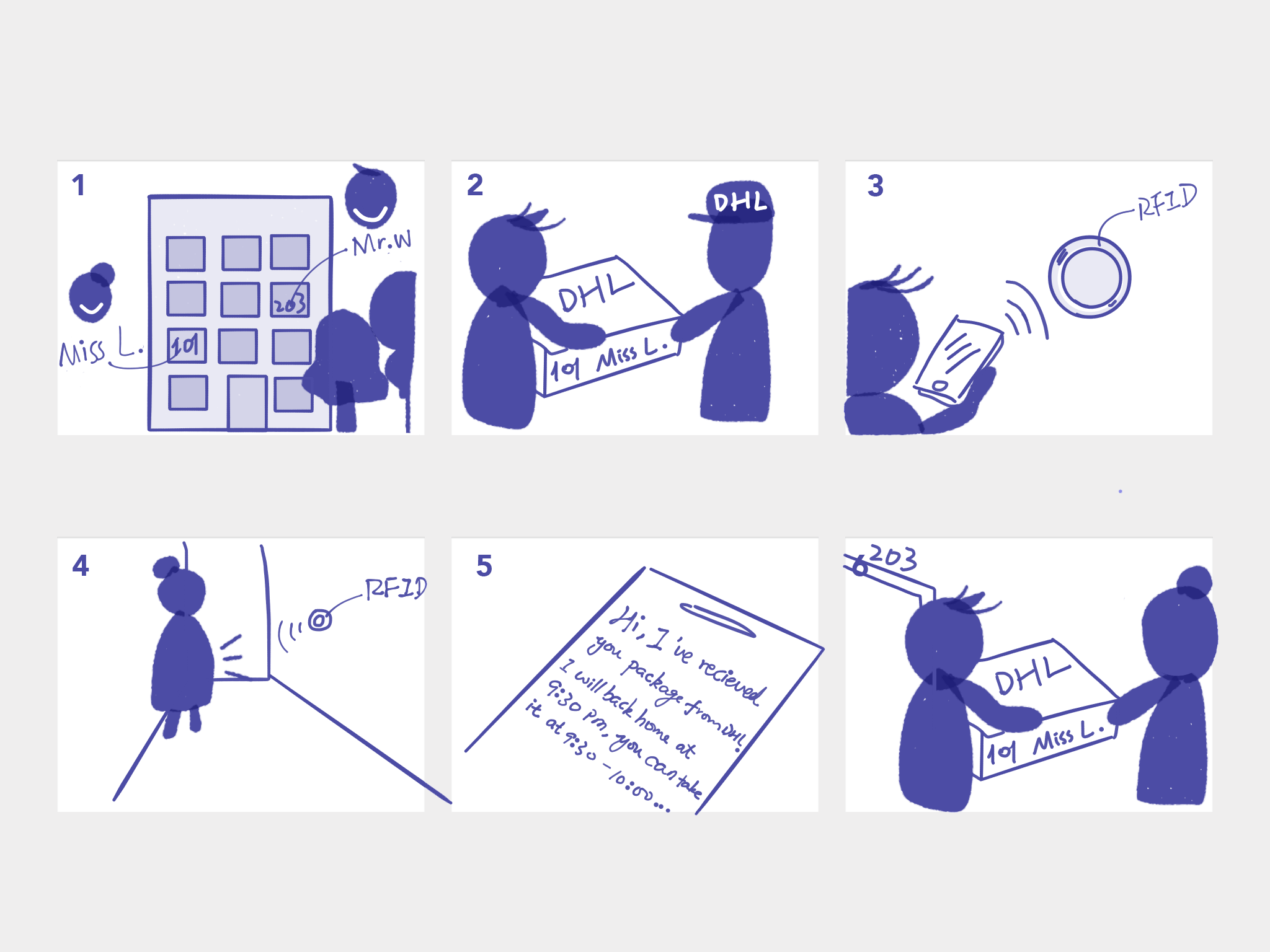
NeighboRing
An RFID-based communication for neighbors
Jan 2015
interduction

The communication of hidden information with people in an indirect and invisible way brings many kinds of new possibilities of tangible and object-based interaction. In this project, we will explore the possibility for the application of RFID products in everyday context, and will explain the details with an explicit design idea ‘NeighborRing’. This is an RFID-based communication for neighbors, and will be finally demonstrated via a video. Throughout, design methods involve a scenario for problem finding and problem solving, sketching, and video prototype.
problem finding
Ms. L and Mr. W are neighbors. They do not know each other well, and only greet friendly when encountering each other e.g. in the corridor. One day Mr. W received a Ms. L’s package from a DHL delivery man, because Mr. L was not at home, so the delivery man has to ask Mr. W to help keep the package.
As Ms. L came back home in the evening, she went to Mr. W’s home and wanted to get her package back. Unfortunately, Mr. W was out at that time. Ms. L was frustrated, as she did not know when Mr. W would be back home. Thus, after 2 hours she came to Mr. W again, but he was not yet at home.

What do Mr. l NEED?
She wants to know when she can get her package back.
wAHT DO mR. w need?
He wants to find a way to tell Ms. L when he will be at home.
They want to contact each other, but they do not know how. Meanwhile, they do not want to get too close to break their own privacy space.
DESIGN DEFINE
The people who live in the same building. (They want to contact each other, but they do not know how. Meanwhile, they do not want to get too close to break their own privacy space.)
City, Communication, Neighbor, Privacy, Invisibility, Indirectness
Our goal is to provide a communication platform for these people who are geographically close, but socially and culturally alien to each other.
problem solving
One day Mr. W has received a package for Ms. L. Before he went out, he left a message for Ms. L through NeighborRing, and told her that he would be back home at 9:30 pm, and that she could take her package back at that time. After Ms. L was back she got a notification on her mobile phone from NeighborRing when she went into the entrance. She had read the message from Mr. W. Thus, after Mr. W back at 9:30, she went to Mr. W and got her package back.

Conclusions

From a designer’s perspective, RFID provides abundant possibilities for communication between digital and analog products as well as novel approaches for interaction with everyday objects.
NeighborRing is an RFID-based design concept. Through our research and analysis, we find out the right scenario to which the invisible and indirect way of RFID can be properly applied. NeighborRing provides a platform to these people who live in the same building. Based on an RFID embedded ring, people can communicate information with others, and at the same time protect their own privacy space. This corresponds to the most psychological phenomenon that people do not want to get too close to strangers, but keep in an indirect touch.